Note that the products discussed on our site are independently selected by our editors. Your purchases through our recommendations may earn us a commission at no extra cost to you.
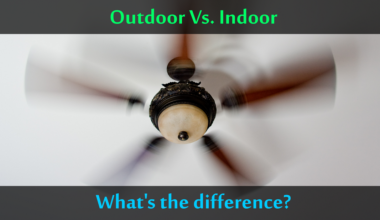
One of the riddles that one needs to solve when buying a ceiling fan is the understanding of the difference between outdoor and indoor fans. Though they look very similar, an outdoor fan is not exactly the same as an indoor fan. There are many differences between these two options that affect the fan’s longevity, efficiency, style, and price.
Today, in this article, we are going to dive into the differences between outdoor and indoor ceiling fans and give you a general guideline to help you decide which type you need to purchase. We will also answer a few questions related to the subject.
Sounds good?
Here you go.
Outdoor vs. Indoor Ceiling Fans – The Difference

When the topic of outdoor vs. indoor ceiling fans comes up, some people instinctively ask, “Can’t a regular fan be used outdoors?” The simple answer is, NO. Outdoor fans differ from indoor fans in many ways. We have highlighted some of those areas below. Take a look:
Weather Rating
This is the most important area in which an outdoor fan differs from an indoor one. Places where people install ceiling fans in can be divided into three main types – indoor areas completely covered from weather elements, covered outdoor areas, and uncovered outdoor areas. Hence, ceiling fan engineers design ceiling fans differently for each of these areas, namely, (in the same order) Dry-rated fans, Damp-rated fans, and Wet-rated fans. So, dry-rated fans are for your bedrooms for example where the fan won’t be exposed to moisture or direct water. Damp-rated ones are for your covered porches, or bathrooms, for example, where they would be exposed to moister but not direct water. Wet-rated fans are for areas where the fan would be exposed to direct water, such as gazebos, verandas, exposed decks, or pergolas.
In this regard, we can put dry-rated fans in the indoor fan category, and damp-rated and wet-rated fans in the outdoor category.
The reason for different types of fans being meant for different types of areas is that the environmental impact on the ceiling fan is not the same in each of these area types. Covered indoor areas such as bedrooms don’t have the problem of moisture build-up. So, any fan can be safely used in these types of areas.
But in areas where there is moisture or rain, the fan needs to be designed specifically to handle such weather elements. Otherwise, the fan would be damaged over time due to being exposed to weather elements it is not designed to handle. This means using an indoor fan in outdoor areas would cause different types of damage to it, such as corrosion damage, blades bent and twisted, motor burnt, painting peeled off, etc.
Blade Size
Another area in which outdoor fans differ from indoor fans is the overall size or more specifically blade span of the fans. Since an outdoor area is usually not bounded by walls, any air that the fan pushes down would just spread on the ground and scatter away. Unlike in a bedroom, where the air would go back to the base of the fan and be pushed down again. The fan in an outdoor area, therefore, needs to produce a larger airflow (think of a hurricane). So, generally speaking, outdoor fans tend to be bigger than indoor fans.
You will find 30-inch fans for indoor areas, but it is tough to find an outdoor fan this small, and it is impractical too!
Motor Strength
Outdoor fans also differ in motor strength from their indoor counterparts. As we have stated already, they need to produce a bigger airflow. So, they need to have bigger blades, and a bigger (read stronger) motor as well.
Style
These two types of fans also differ in their style options as well. Though the difference is not much, outdoor fans tend to have fewer style options than their indoor counterparts. This is due to the fact that outdoor fans need to be designed keeping in mind the elements and protection therefrom. So, usually, outdoor fans have fewer style options.
If you do a reality check, you will see, many a time, indoor fans have many finishes to choose from. On the other hand, outdoor fans are hard to find with many different style options.
Price
You may ask – well if outdoor fans can be installed anywhere, and indoor fans can’t be, why not just buy some outdoor fans and install them anywhere I like?
Well, the answer is “price”.
Outdoor fans can be installed and used anywhere, sure, but that comes with a higher price tag. Due to the fact that outdoor fans have to be designed with more protection from the elements, they tend to be more expensive as well. The extra cost can sometimes be significant. So, you should not pay the extra money unless you really need to. Don’t go and buy an outdoor fan for your bedroom for $300 when you could get one for only $200, for example.
Examples
Salt-air Resistant Ceiling Fans
Up until now, we have discussed Dry-rated fans, Damp-rated fans, and Wet-rated fans. Another type of fan that we have not touched on yet is the Salt-air resistant fan. We all know that salt water is not like rainwater or any other type of normal water for that matter. So, ceiling fans that would be used in places where they would be exposed to salty air need to be designed to handle that. This is why engineers came up with a different type of ceiling fan called salt-air resistant ceiling fans that are meant for people that live by the oceanside. These fans are not exactly like damp-rated or wet-rated fans, rather they are a more sophisticated version of those fans. You need to use one if you are planning to use your ceiling fan in salty-air environments.
Hunter’s WeatherMax fans are a great example of such fans.
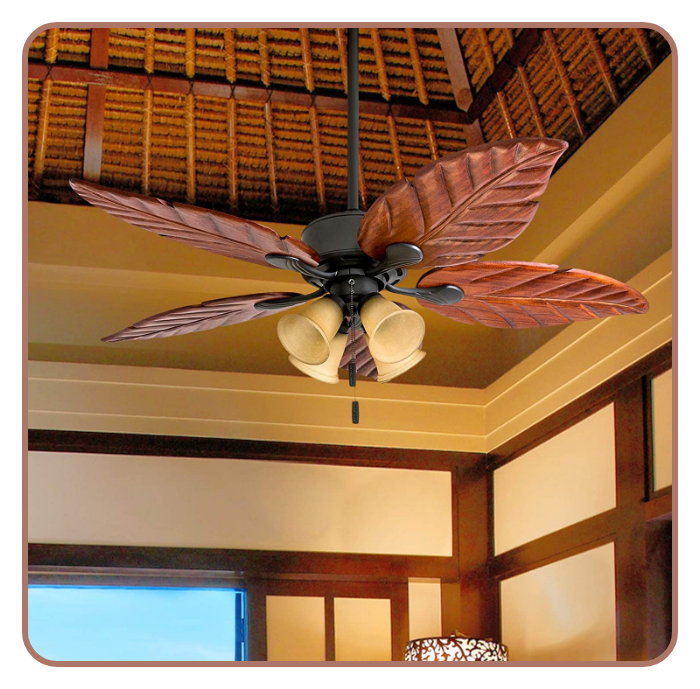
Which Type Should You Get?
If you want to use your ceiling fan only in dry and covered indoor spaces like bedrooms or living rooms, get a dry-rated ceiling fan and save the extra money that you would be otherwise spending with an outdoor fan.
But if you want to use your fan in areas where the fan would be exposed to moisture, get a Damp-rated fan. Example of such areas includes your bathrooms, laundry rooms, covered porches, patios, etc.
However, if you want to use your ceiling fan in all locations including uncovered outdoor ones, or only in uncovered outdoor areas, get a wet-rated fan.
Lastly, if you live by the ocean or on a lakeside, you should opt for a fan that is not only Wet-rated but salt-air resistant too.
Can You Use Indoor Fan Outdoors?
No. You can’t use your indoor fan outdoors. Your indoor ceiling fan would be severely damaged if you do, sooner than you think. This is due to the fact that indoor fans are not designed to withstand outdoor weather elements like moisture, rain, snow, or high winds.
You must use outdoor-rated fans, namely, damp-rated or wet-rated fans outdoors.
Can You Use Outdoor Fan Indoors?
Yes. You can use an outdoor fan indoors without any problem. Since outdoor fans are designed to withstand any type of weather element, you can use one in your bedroom, living room, or bathroom for example without any problem.
FAQ
With that, here follow some frequently asked questions, along with the answers from our editorial team.
What is the best outdoor ceiling fan?
The best outdoor ceiling fan is the one that meets your requirements the most. Decide what you need in your outdoor ceiling fan and then look for a fan that meets those criteria effectively.
Who makes the best outdoor ceiling fan?
All brands produce outdoor ceiling fans. But if you are asking for names, Hunter and Moder Forms produces some of the best outdoor fans on the market today.
What size outdoor ceiling fan do I need?
This depends on the setting below your fan. Get a fan that covers the whole sitting area beneath it with its blades.
How many blades are best for outdoor ceiling fans?
Three blades are usually the best with outdoor fans. You can get fans with more blades, but you may get less airflow sometimes due to the fan spinning more slowly.
Can outdoor ceiling fans be exposed to rain?
Not all outdoor ceiling fans are the same. Wet-rated fans can be exposed to rain while Damp-rated ones can’t be. The latter one is designed only for covered outdoor areas. They can withstand moisture but not direct water such as rain or snow.
How to waterproof an outdoor ceiling fan?
You don’t need to waterproof your outdoor ceiling fan if you get wet-rated fans. They can withstand direct contact with rain and you can even wash them with a garden hose. As for damp-rated fans, you can’t waterproof them.
How can I see what my outdoor ceiling fan is rated at?
You will find your fan’s outdoor rating on online listings, on the product box, on the manufacturer’s instructions guide, or labels on the fan’s body. Look for “Wet-rated” or “Damp-rated” marks, or something like “For Outdoor Use”, “Outdoor compatible”, etc.
Are outdoor fans worth it?
Outdoor fans are absolutely worth their price if you are going to be using them outdoors. They are a cost-effective way to bring the comfortable breeze outdoors where you might not always find the natural breeze to be an option. But outdoor fans may not be worth their price if you are only going to use them indoors.
Can a regular ceiling fan be used outdoors?
Depends on what you mean by a regular ceiling fan. If you mean a Dry-rated one, then absolutely no. If you mean a Damp-rated one, then yes if the installation site is covered. If you mean a Wet-rated fan, well, they are designed specifically for the outdoors.
Final Words
There you have it.
This has been our take on the subject of outdoor vs. indoor ceiling fans – the difference.
When it comes to outdoor vs indoor cofusion, remember, outdoor fans can be used anywhere, and indoor fans are only for the indoors.
So, you need to buy a fan that is specifically designed to handle the weather elements it will be exposed to at its installation site, or just get a wet-rated fan, paying the extra money, if you are planning to use it in different types of locations – dry, damp, or wet, from time to time.
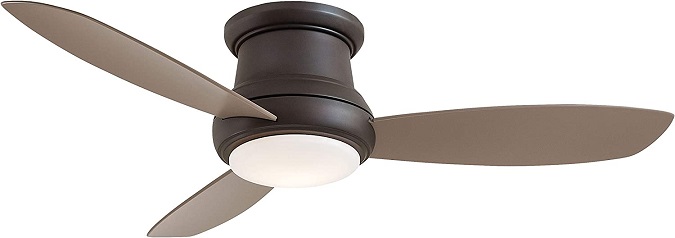
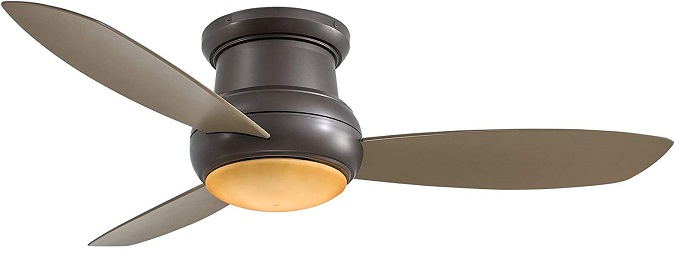
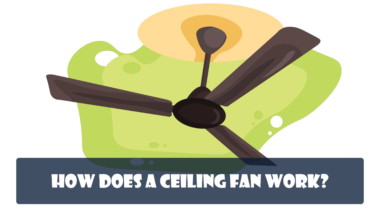



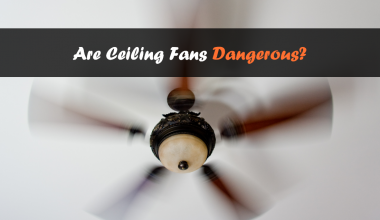


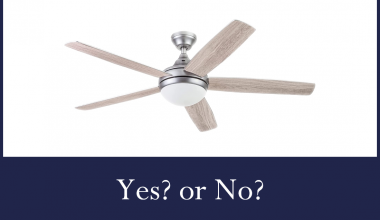
Conversation
No Comments here